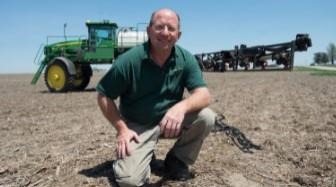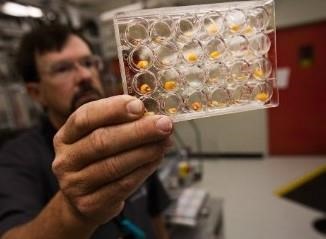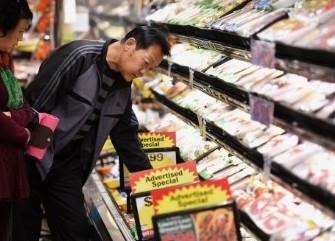By Shannon Gupta
Uncertainty is growing in America’s corn belt — and Ray Gaesser is worried.
He’s been harvesting corn and soybeans on his namesake Iowa farm since 1977. Now, climate change is threatening his business’ future.
“We’re doing the best that we can in an uncertain climate and uncertain conditions,” Gaesser, 64, says. “We live and die by the weather.”
Corn-producing states like Iowa, Illinois, Nebraska and Minnesota have been experiencing extreme weather for decades. Experts like Dr. Eugene Takle, a professor of climate science at Iowa State University, attribute those extremes to climate change.
In 2012, farmers struggled to cope with a severe drought that limited production and sent corn prices up. While those dry extremes are decreasing lately, there’s a new weather phenomenon making trouble: Rain.
“We’re getting excessive rains in the spring — more frequent rains and more heavy rains,” explains Takle.
What’s so bad about rain?
Moderate rain can actually increase corn production, but heavy rains can be detrimental. Those rains pull nutrients out of the earth and cause soil destruction, making it more difficult for corn and other crops to thrive, explains Takle.
Warmer, moister evenings are also growing more common in the corn belt. That moisture makes it more difficult — and expensive — to dry corn before it’s sold.

“Last fall, it was much more difficult to get the corn to dry in the field,” Gaesser says. “We had to put it in our grain storage and run air through it at least for a few weeks.” That drying process leads to higher energy costs, Gaesser adds.
In theory, there is at least one positive effect of climate change: The corn growing season is now 10 to 14 days longer than it was 40 years ago. That trend technically gives farmers more days to plant — but heavy rains have made it difficult for them to take advantage.
“The number of work days has gone down substantially,” explains Takle.
How corn farmers are adapting to climate change
Despite fewer work days, corn yields have actually been on the rise. That’s because farmers have been investing in better technology to combat unpredictable weather.

Higher-quality seeds allow corn to “withstand difficult conditions better,” explains David Widmar, an agricultural economist at Purdue University.
That’s thanks to major agricultural technology companies like Monsanto, John Deere and DuPont Pioneer.
Monsanto poured more than $1.5 billion into research and development efforts last year to design better quality corn seeds and products. As the Midwest’s climate grows hotter, Monsanto notes there’s demand for seeds that can thrive in warmer and more extreme environments.
“In our breeding efforts and biotech efforts, we’re making sure our products can withstand that extreme weather,” explains Pam Strifler, Mosanto’s sustainability chief.
But better seeds mean higher prices. Corn seed prices have been steadily increasing since the mid-1990s, according to data from the University of Illinois. That’s resulted in corn prices doubling over the past decade.
Widespread impacts on your wallet
Technology has helped protect the corn industry from climate change, but Takle and Widmar fear mother nature may one day catch up. If that happens, consumers can expect to feel the impact in several ways.

First, the price of meat, eggs and dairy could change. Around 60% of the corn produced in the corn belt becomes feed for cattle and other livestock. If corn production decreases, prices could rise, making it more costly for farmers to feed their livestock. In turn, the price of meat and animal products could go up, explains Tackle.
But don’t expect the price of canned sweet corn to change dramatically.
There are several costs that go into making corn food products, including packaging, processing, advertising. Those costs can overpower fluctuations in corn prices, explains Paul Bertels, a farmer and sustainability leader at the National Corn Growers Association.
In addition, “very, very little corn — 1% — is used for straight up human consumption,” says Takle.
Rural economies that depend on singular crops like corn could be directly impacted if corn production changes.
“If we see flooding events and drought that’s going to impact food production and it’s also going to impact the consumers that live in those areas,” Widmar says. In addition, climate change could force the corn belt to move north where its cooler.
Click here to see more...